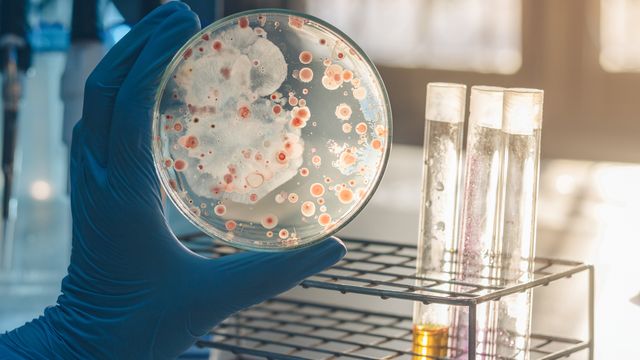Salmonella spp. Culture Testing in Meat and Poultry
The testing of Salmonella species in meat and poultry is a critical component of food safety programs in clinical and healthcare settings. Salmonella is one of the leading causes of foodborne illness, particularly in perishable foods such as meats and poultry that undergo rapid spoilage due to their high protein content.
Salmonella spp. can contaminate meat during processing or handling before consumption. Proper culture testing ensures that contaminated products are identified early in the supply chain, allowing for prompt corrective actions such as product recall, reprocessing, or destruction. This proactive approach is essential for preventing widespread outbreaks and ensuring public health.
The primary goal of Salmonella spp. culture testing is to identify and quantify potential pathogens in food samples. The testing process involves several steps: sample collection, preparation, inoculation onto selective media, incubation, and confirmation using biochemical tests or serotyping techniques. This method ensures accurate detection even when pathogen levels are low.
The clinical significance of Salmonella spp. lies in its ability to cause severe gastroenteritis leading to diarrhea, fever, abdominal cramps, and sometimes more serious complications like typhoid fever. Therefore, healthcare professionals rely on accurate testing results for both patient management and epidemiological surveillance.
For meat processing facilities, compliance with international standards such as ISO 6579:2018 and USDA guidelines is mandatory to ensure food safety. These standards provide specific protocols for sample collection, transport, and analysis which help maintain consistency across laboratories.
The culture method remains the gold standard despite advancements in molecular diagnostic techniques because it allows direct visualization of bacterial colonies on agar plates. This visual confirmation enhances reliability when dealing with low-prevalence samples where false positives could lead to unnecessary recalls or production halts.
In addition to its role in clinical diagnostics, Salmonella spp. culture testing plays an important part in monitoring food safety practices throughout the supply chain from farm-to-fork. By integrating this test into routine quality assurance programs, processors can identify potential sources of contamination early and implement corrective measures before they affect consumer health.
Given the complexity involved in performing these tests correctly, it is crucial to engage with certified laboratories that have expertise in microbiological analysis. These labs employ trained staff using state-of-the-art equipment capable of delivering precise results within specified timeframes required by regulatory bodies worldwide.
Benefits
The implementation of Salmonella spp. culture testing offers numerous benefits to stakeholders involved at every level of the meat and poultry industry, including suppliers, processors, retailers, and consumers:
- Avoidance of Foodborne Illnesses: Early detection allows for immediate intervention preventing large-scale outbreaks.
- Enhanced Reputation: Consistent compliance with best practices improves brand image among customers seeking safe products.
- Cost Efficiency: Preventing recalls through timely identification saves money on reprocessing or disposal expenses.
- Regulatory Compliance: Ensures adherence to government regulations regarding food safety standards.
In summary, regular Salmonella spp. culture testing contributes significantly towards maintaining high standards of hygiene and quality control within the meat and poultry sector.
Frequently Asked Questions
Customer Impact and Satisfaction
Regular Salmonella spp. culture testing has a direct impact on customer satisfaction levels by ensuring that only safe products reach the market. Consumers trust brands that demonstrate commitment to food safety, which translates into higher loyalty rates and repeat purchases.
- Improved Customer Confidence: Transparent communication about testing procedures builds trust between suppliers and end-users.
- Better Health Outcomes: Reduction in instances of foodborne illnesses leads to fewer doctor visits and hospital admissions, enhancing overall well-being.
The consistent delivery of quality products supported by robust testing protocols contributes significantly towards creating satisfied customers who are more likely to recommend your brand positively.
Environmental and Sustainability Contributions
Implementing effective Salmonella spp. culture testing contributes positively to environmental sustainability efforts in several ways:
- Minimized Waste: By identifying contaminated batches early, unnecessary disposal of wholesome products is avoided reducing landfill contributions.
- Economic Efficiency: Preventive measures reduce costs associated with waste management and potential legal actions due to product recalls.
Beyond these immediate benefits, adopting stringent quality control measures like Salmonella spp. culture testing supports broader sustainability goals by promoting responsible resource use throughout the supply chain.





